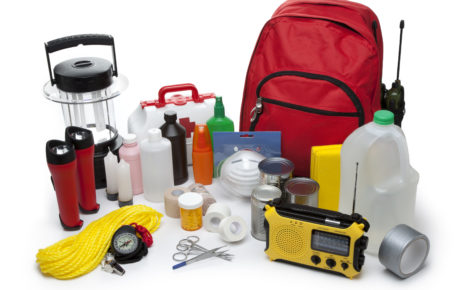
We were in the midst of the Aegean Sea, somewhere between Santorini and Athens, tossing like a toy boat in the churning pitch-black waves. Our small cruise ship hit rough waters as we sat down for dinner. After a few moments of intense rocking, we lost our appetites and left the table with plates still full. Crew members began passing out barf bags.
Nausea hit me, and the only thing I knew to do was to go to the deck for fresh air. After several minutes of being blasted with cold gusts in the dark, I had to go back inside to warm up. Then I felt ill again and had to go back out for air. For what felt like forever, I continued going back and forth until things got better. This was two years ago, when I was 24, and it was my first real case of motion sickness.
I had previously been on three cruises, hundreds of plane rides, dozens of train and boat rides, and gazillions of car rides, and had somehow never experienced it. Then again, I am a freak of nature and have only thrown up three times in my adult life (I’m not a drinker). I never ended up barfing that night, of course, but I didn’t come prepared with anything to treat my awful motion sickness–I was totally caught off guard by it. Now that I have experienced the dreaded malady, I wanted to know more about it so I can be more prepared next time.
I have an aunt who swears by those wrist bands that go over your pressure points. I know someone else who always wears motion sickness patches on cruises. I asked the Twitterverse what they use to treat motion sickness, and here are some of the answers I got:
- Dramamine is my drug of choice! I keep it in my purse always because I get motion sick more easily than some and it’s no fun. -@SaraKateTravel
- Smoke pot, it works! -Anonymous
- Ginger chews. Found in natural foods/remedies section of supermarket. Could also try ginger pills. -@karasw
- I usually drink something citrusy like 7up and sit very still. I hear crackers work too. -@spencerspellman
- My grandma used to leave a spoon in her mouth for it, but my disclaimer; my Shirley was pretty nutty! -@manvsclock
- Ginger Ale is also good, or anything with ginger in it. Saltine crackers are a plus too! -@hopandjaunt
I also interviewed via email Brad Doyle, Brand Manager for Insight Pharmaceuticals, Inc., the company that makes the motion sickness medication Bonine®. It’s made to be less drowsy than other motion sickness medications, and you only need to take it once a day.
 When I ask Brad why this annoying condition happens, he says, “Motion sickness happens when the inner ear, the eyes, and the deeper tissues of the body’s surface, called proprioceptors, send conflicting signals to the brain. This throws off our sense of balance. The most common symptoms include nausea, dizziness, sweating, vomiting, headache and fatigue.”
When I ask Brad why this annoying condition happens, he says, “Motion sickness happens when the inner ear, the eyes, and the deeper tissues of the body’s surface, called proprioceptors, send conflicting signals to the brain. This throws off our sense of balance. The most common symptoms include nausea, dizziness, sweating, vomiting, headache and fatigue.”
While most people get motion sickness on a moving boat, train, plane, or car, Brad says some people can even get it when watching a movie scene on a big screen. Remember the warning you get at IMAX movies? It says to close your eyes if you start to feel icky. Too bad that doesn’t work on a cruise ship.
According to the Centers for Disease Control and Prevention, women who are pregnant, menstruating, or on hormones are more susceptible to experiencing motion sickness. People who get migraines are also more likely to get motion sickness. But they say that all people are at risk for it with the right stimuli except for infants and toddlers, who are somehow mostly immune.
Bonine®’s website has some helpful tips for motion sickness. Here are some of their dos and don’ts that I wasn’t aware of:
Dos:
- If you’re traveling by car or boat, it can help to keep your gaze on the horizon or fixed on another stationary point.
- Don’t breathe just through your nose–breathe deeply through your mouth.
- If you’re on a car or plane, turn the air vent toward your face.
- Your symptoms can be lessened by where you are located. “Sitting in the front seat of a car or bus, sitting over the wing of a plane, or being in the central cabin on a ship can help you feel less motion,” they say. If you have the option, driving instead of riding in a car can also help.
- In the 24 hours leading up to air travel, stick to light meals or low-calorie snacks.
Don’ts
- Don’t read in the car, especially if you’re on a bumpy and windy road.
- Don’t smoke.
- While you shouldn’t overeat, eat greasy food, or eat strong-smelling foods, you also shouldn’t travel on an empty stomach.
- Don’t sit in the back of a plane or car.
- Don’t sit backward when riding a train.
- If you’re on a boat, try not to go below deck–not having a view of the horizon could make things worse.
The CDC adds that flavored lozenges may help distract you from your queasiness, as can aromatherapy using mint or lavender.
Next time I hop on a small boat, I will be much more prepared. Have you ever had motion sickness? What do you usually do to treat it?
![]() photo credit: belboo
photo credit: belboo




